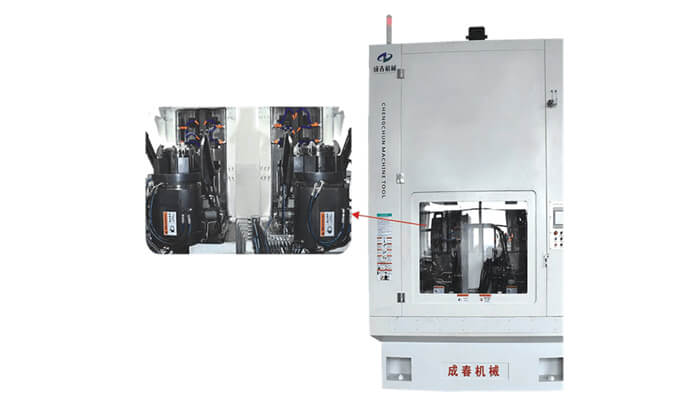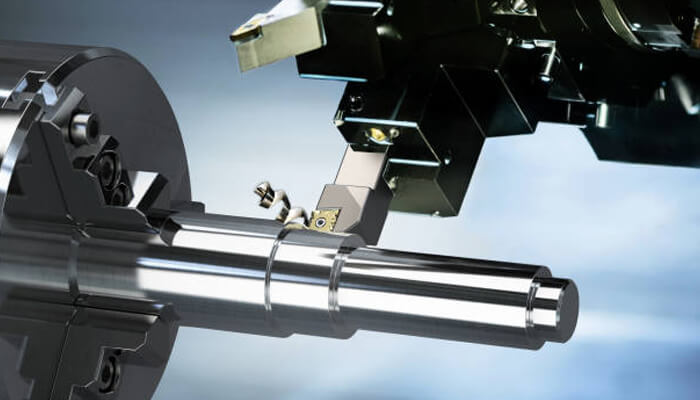Broaching is a metalworking process that is typically performed using a broaching machine, which is specifically designed for this purpose. However, in some cases, it may be possible to perform broaching on a lathe using a broach holder or adapter.
A broach holder or adapter is a tool that attaches to the lathe’s chuck and holds the broaching tool. The lathe is then used to rotate the workpiece while the broach holder applies the cutting force. This can be an effective way to broach small or simple parts, particularly if a broaching machine is not available.
However, broaching on a lathe has some limitations. For example, the size and complexity of the part that can be broached may be limited by the size and capacity of the lathe. Additionally, the forces involved in broaching can put a significant strain on the lathe’s spindle and bearings, potentially causing damage over time.
In summary, while it may be possible to perform broaching on a lathe using a broach holder or adapter, it is typically not the preferred method. A dedicated broaching machine is usually the best option for efficient and reliable broaching operations
What is a lathe?
A lathe is a machine tool used in machining that rotates a workpiece on its axis to perform various cutting, drilling, and turning operations. It is one of the oldest and most commonly used tools in the machining industry, like a Broaching machine.
The workpiece is held in place by a chuck or a collet, and a cutting tool is applied to it to remove material and create the desired shape. The cutting tool is typically held in a tool post, which can be adjusted to control the depth and angle of the cut.
Metal Lathes can be used to create a wide range of shapes and sizes, including cylindrical, conical, and spherical shapes. They are commonly used in the manufacturing of parts for machines, engines, and other mechanical devices, as well as in woodworking, metalworking, and other applications.
There are many types of lathes available, including engine lathes, turret lathes, CNC lathes, and more. Each type of lathe has its unique features and capabilities, making them suitable for different types of machining operations.
Benefits of lathe
A lathe is a machine tool used in a wide range of manufacturing processes. It consists of a rotating workpiece and a cutting tool that is used to shape and size the material being worked on. The benefits of a lathe are numerous, making it an essential tool in many industries.
One of the primary benefits of a lathe is its versatility. It can be used to produce a wide range of parts, from small components for electronics to large industrial components. With the right tooling and setup, a lathe can produce parts with tight tolerances, high precision, and smooth finishes.
Another advantage of using a lathe is its efficiency. It can produce parts quickly and accurately, making it a cost-effective option for high-volume production runs. Additionally, a lathe can perform multiple operations, such as drilling, boring, and threading, all in one setup, reducing the need for multiple machines and setups.
A lathe is also beneficial for its ability to work with a wide range of materials. It can handle everything from soft materials like plastics and wood to hard materials like metals and ceramics. This versatility allows manufacturers to use a lathe for a wide range of applications, from making small components for consumer products to producing large industrial parts for heavy machinery.
Finally, a lathe is relatively easy to operate and requires minimal training to use effectively. This ease of use makes it an ideal tool for both experienced machinists and those new to the field.
In summary, the benefits of a lathe are its versatility, efficiency, ability to work with a wide range of materials, and ease of use. These advantages make it an essential tool in many industries, including manufacturing, automotive, aerospace, and construction.
How lathe makes a profit in business
A lathe can make a profit for a business in several ways, including:
1. Increased production efficiency: By using a lathe, businesses can produce parts faster and more accurately, reducing production times and increasing output. This can lead to increased revenue and profitability.
2. Improved quality control: A lathe can produce parts with tight tolerances and minimal defects, reducing the need for costly rework or repairs. This can save a business time and money and increase customer satisfaction, leading to repeat business and referrals.
3. Versatility: A lathe can work with a wide range of materials, allowing businesses to offer a variety of products and services to their customers. This can help attract and retain customers and increase revenue streams.
4. Reduced waste: A lathe can produce parts with minimal waste, reducing material costs and environmental impact. This can save business money and help attract environmentally conscious customers.
5. Competitive advantage: By using a lathe, businesses can gain a competitive advantage in the market by producing high-quality parts quickly and efficiently. This can help them win new business and increase market share.



